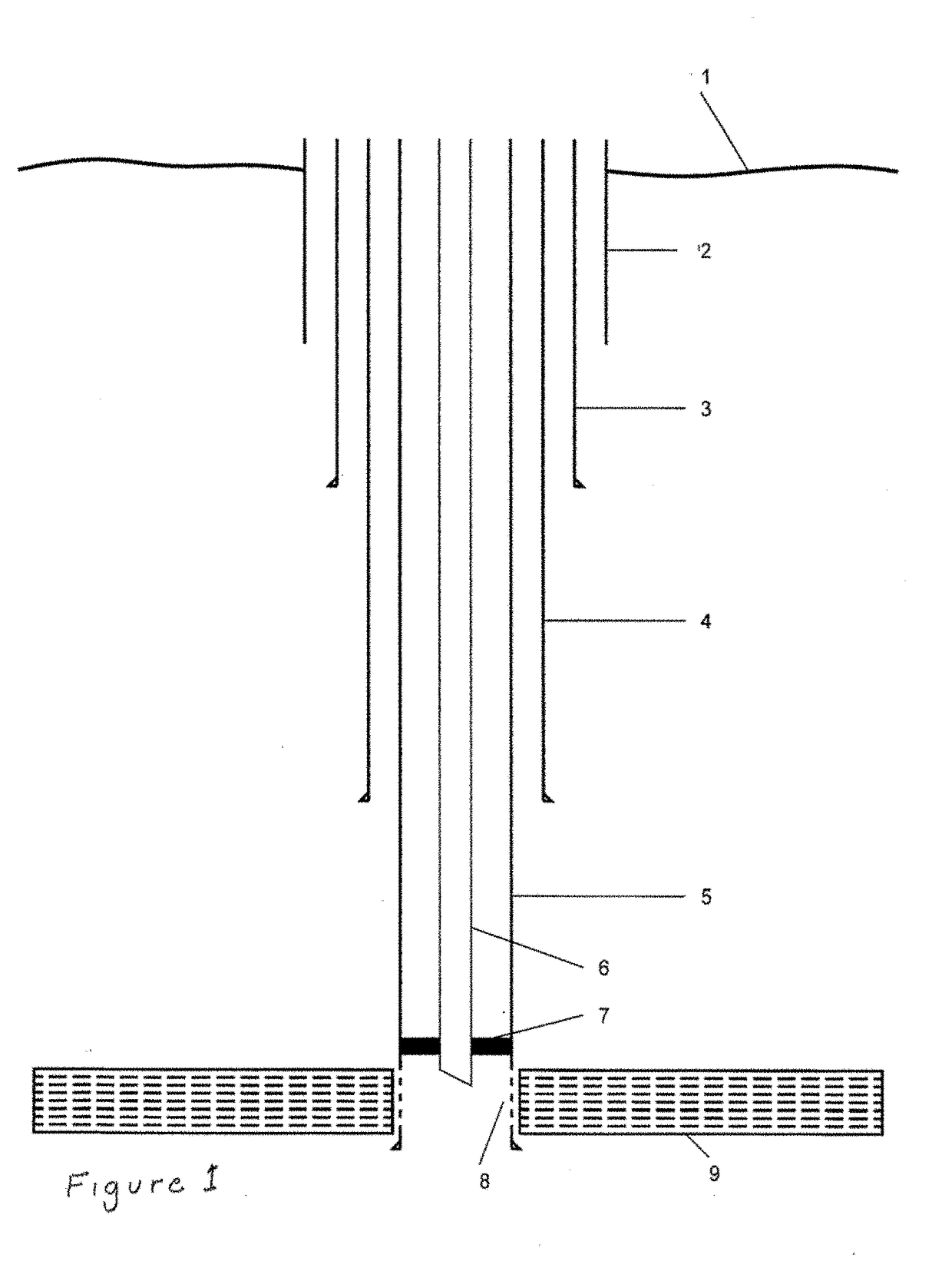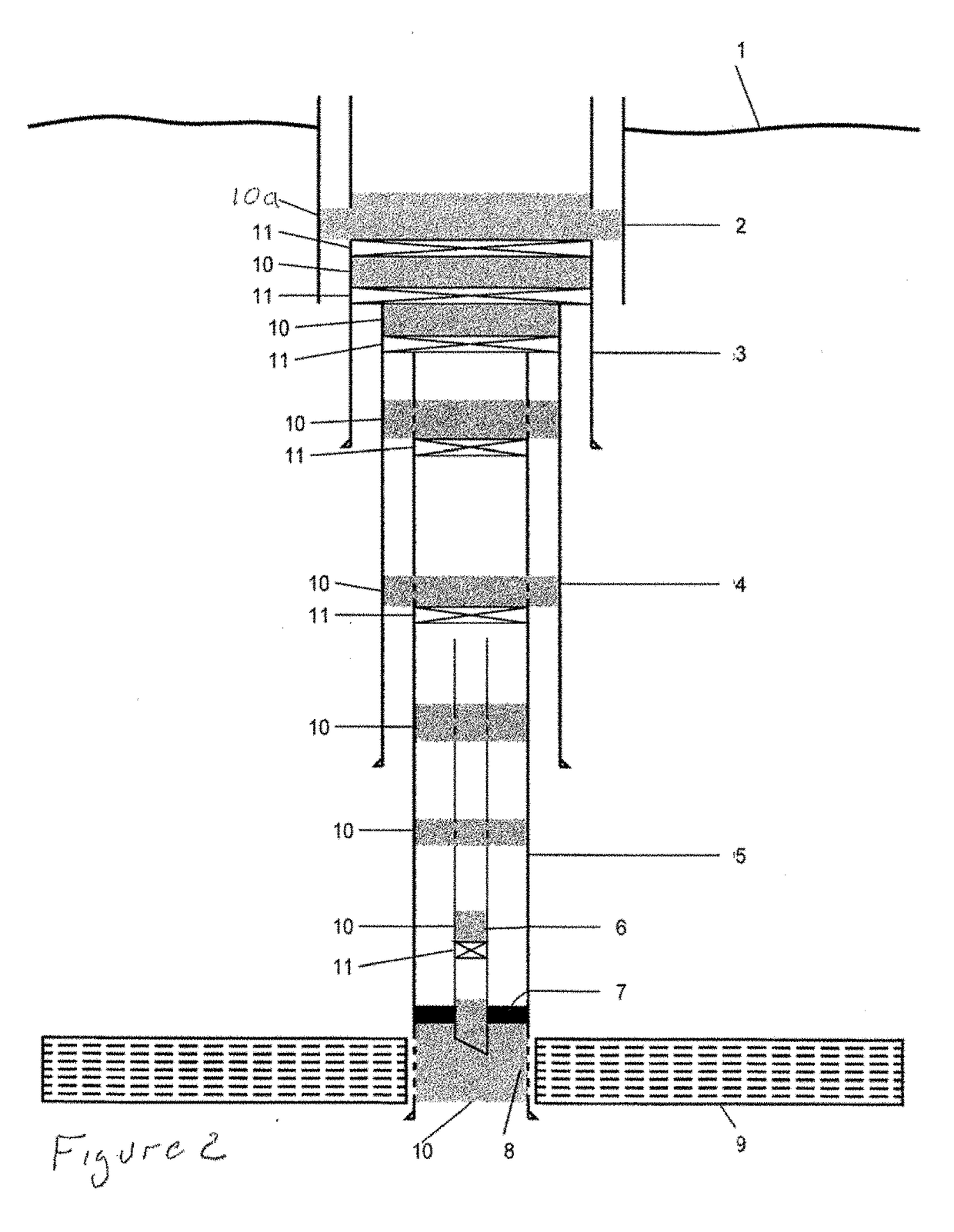Resin composite with overloaded solids for well sealing applications
- Summary
- Abstract
- Description
- Claims
- Application Information
AI Technical Summary
Benefits of technology
Problems solved by technology
Method used
Image
Examples
application example
[0103]As shown schematically in FIG. 1, an offshore well targeted for abandonment includes a plurality of telescoping casings 2 extending from the sea floor 1, or slightly thereabove, to the producing formation 09 located inwardly of the earth. The distance between the seafloor and the producing formation(s) is on the order of thousands of feet, whereas the diameter of the casings is on the order of several feet to less than one foot. The series of telescoping casings 02 through 05 were previously cemented in place in the drilled well bore by cement extending between at least portions of the lengths thereof and the adjacent earth formations of the drilled bore, and cement is also located in at least a portion of the annulus where the smaller casing extends inwardly of an overlying larger casing. A production tubing 06 is isolated from the casings by a production packer 07. The casing extending through, or into, a producing formation includes perforations 08 therethrough to provide a...
PUM
| Property | Measurement | Unit |
|---|---|---|
| Temperature | aaaaa | aaaaa |
| Temperature | aaaaa | aaaaa |
| Temperature | aaaaa | aaaaa |
Abstract
Description
Claims
Application Information
 Login to View More
Login to View More - R&D
- Intellectual Property
- Life Sciences
- Materials
- Tech Scout
- Unparalleled Data Quality
- Higher Quality Content
- 60% Fewer Hallucinations
Browse by: Latest US Patents, China's latest patents, Technical Efficacy Thesaurus, Application Domain, Technology Topic, Popular Technical Reports.
© 2025 PatSnap. All rights reserved.Legal|Privacy policy|Modern Slavery Act Transparency Statement|Sitemap|About US| Contact US: help@patsnap.com



